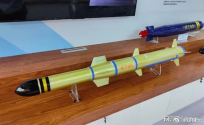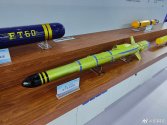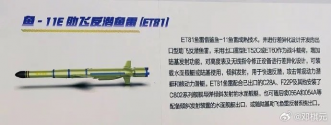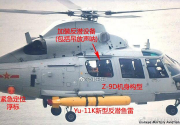Well, if the idea that not contesting enemy communications with submarines is an idea making sense, when one has a suitable&numerous instrument for contesting it - it's very obviously wrong.
Apart from screening operations(which also may go beyond 1 IC), submarines shall be there, where they bring the most operational harm(within their reach). It's very obviously exactly 2nd IC and beyond, if necessary. Large ~3.5k boats are built for it.
3.5k ton boats are still very very very much suboptimal for missions at long distances in open water, and for the PLA they are likely better off retaining them for 1IC operations to ensure subsurface dominance in that theater of operations.
If you want to forcefully come up with a situation where the PLA deploys its SSKs in a high intensity westpac conflict at 2IC distances and beyond in any meaningful fashion, then sure fine. But they'll suck at the mission and be unable to sustain it and almost certainly will be prey for opposing SSNs (let alone opposing surface and aerial ASW capabilities).
(1)With all due respect - a claim that a modern SSK fleet has no credibility in a high-intensity conflict by itself is an incredible one. They're ships most useful in high-intensity conflict in the first place, their other roles being deeply secondary (and indeed often inferior to SSNs).
(2)Any credible larger-scale fleet operations involve subsurface operations - it's one of very few ways to shape the naval theater of operations beyond what basic geography can provide.
If the implication is that PLAN won't be a competitive formation for at least a decade to come (Even at 2023 tempo, a competitively-sized SSN force will take at least half a decade, plus at least several cycles of yearly maneuvers) - even mine views are different, I admit it.
1) I said that a modern SSK fleet has no meaningful credible role in a high intensity conflict that the PLA is expected to fight in (i.e.: westpac HIC) at 2IC distances and beyond, which was the entire context of the discussion.
SSKs can operate within 1IC in a high intensity conflict, but such operations are not meaningful as they are unable to project a subsurface threat at distance.
2) Let's put it this way -- I am saying if a high intensity conflict between the PRC and US were to occur today in ye-olde "generic westpac HIC" scenario, I do not believe the PLAN will be able to meaningfully project subsurface threats beyond the 1IC with the current submarine fleet that they have, because to do so against the opposing force they face requires a large, capable SSN fleet which they presently lack, and the large, capable SSK fleet they have are simply non-competitive at distances beyond the 1IC (such as at 2IC distances and beyond) and are better retained to operate in the 1IC so they can at least possess subsurface competitiveness or superiority in the 1IC theater.
If we want to entertain the idea of the PLAN sending out a couple of SSKs to 2IC distances in hopes that they might get lucky, sure why not. But they're not going to be doing large scale deployments of multiple dozen SSKs to 2IC distances with expectation that they are able to present a significant and credible subsurface threat.
Overall, Zeak is actually pretty much correct in this exchange --- for the purposes of the PLA, against the opfor they are up against, in the maritime geographic environment they are in, then yes in a high intensity conflict, their SSK fleet are better viewed as semi mobile short range mobile mine fields as ambush predators. But they are not open water, long distance hunters capable of true operational scale maneuver at useful transit speeds that can ingress and egress in a dynamic and persistent manner -- for that, you need SSNs.





